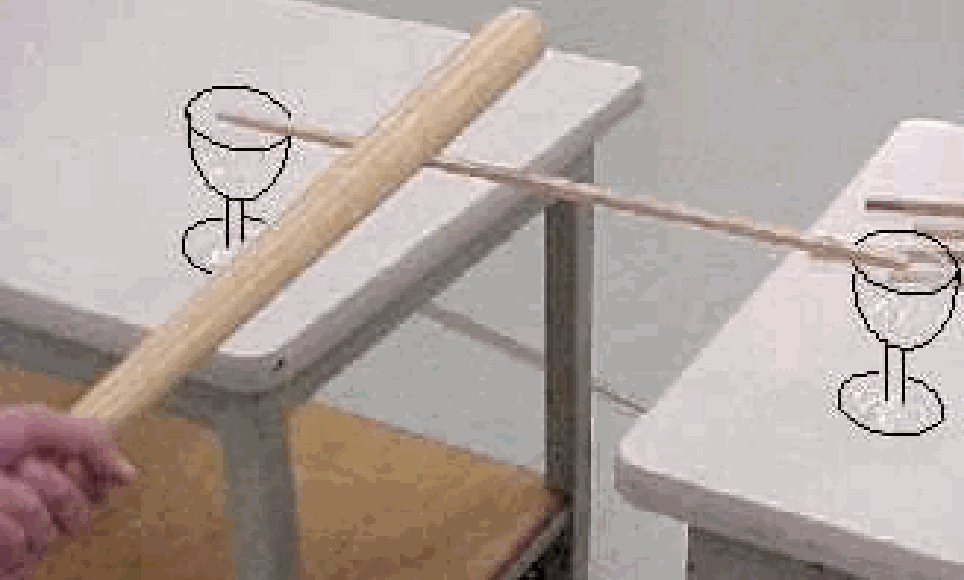02 Walk and Ball#
Aim#
To demonstrate that vertical and horizontal motions are independent of each other
Subjects#
1F30 (Inertia of Motion)
Diagram#

Fig. 70 .#
Equipment#
Basketball.
Walking instructor.
Presentation#
The instructor holds a basketball in his hand and walks at a constant speed in front of the lecture hall. While walking, he lets the basketball fall from his hand. The ball bounces up and down, gradually losing height, and eventually rolls along the floor. Despite this complex vertical motion, the ball keeps pace with the instructor, who continues walking at a constant speed. This shows that the horizontal velocity of the ball remains constant.
Explanation#
In this situation, there are only forces acting in the vertical direction. In the horizontal direction, there is no force to change the horizontal movement, and so, the horizontal velocity remains the same as compared to the initial state.
Remarks#
The basketball will also gain some rotation upon hitting the ground. However, if you release the ball correctly (by letting it roll from your hand instead of simply dropping it), this rotation won’t interfere with the demonstration. So even for this simple experiment, it’s worth taking a few minutes to practise beforehand.
If you simply drop the ball without any initial rotation, it will start rotating when it hits the ground and won’t keep up with you. Of course, this phenomenon can be a great opportunity to spark a discussion with your students about energy.
Also see the demonstration Throwing a basketball.
